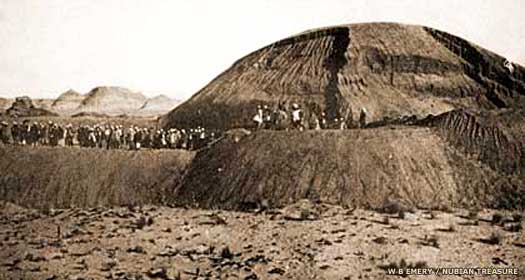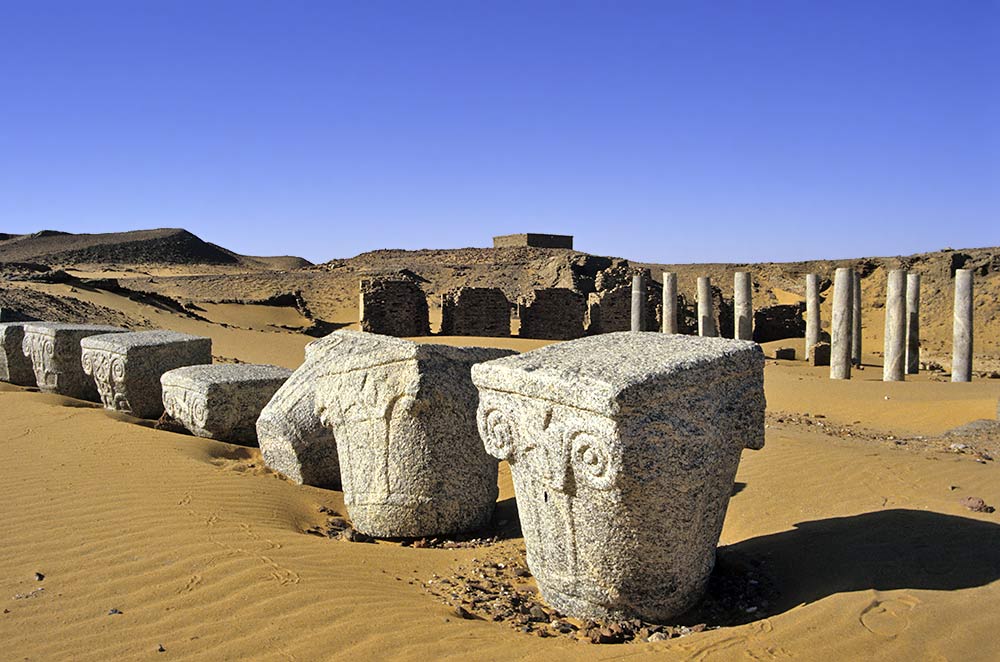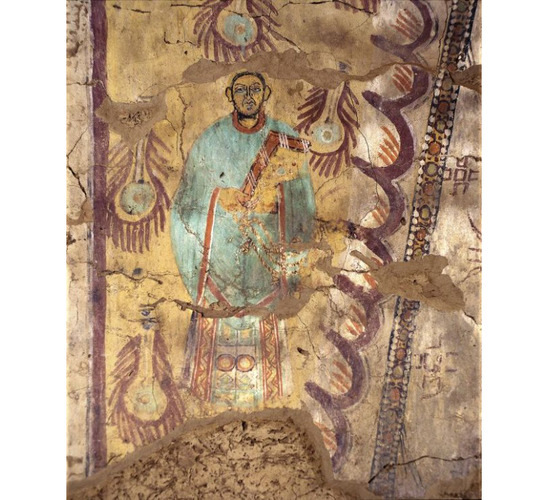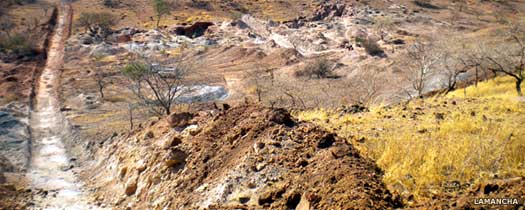Post by anansi on Feb 22, 2015 23:55:04 GMT -5

While mentioned in some threads I was surprised that we did not have a thread dedicated to this topic.
Everyone reading this knew of Christian Axum which was a great empire but little less known were the other Christian Kingdoms the first being Nobatia
The Nubian kingdom of Nobatia (or Nobadia) had its capital at Pachoras (modern Faras), and was located in modern northern Sudan and southern Egypt. The exact date of its founding is not known, but it seems to be early, perhaps early enough to be an indirect continuation or re-founding of the Meroë Kush kingdom. The traditional theory is that the old kingdom was destroyed during an invasion by Ezana of the Ethiopian kingdom of Axum. To contradict this, the Ethiopian account seems to describe the quelling of a rebellion in lands they already controlled. It also refers only to the Nuba, and makes no mention of the rulers of Meroë.
However, no details of rulers at Meroë are known after about AD 350, making their survival unlikely. There is a possibility that the kings, or at least something of the royal family, moved to Pachoras and re-found the kingdom as Nobatia. Unfortunately, no records exist to document anything about the kingdom other than its last days.
Christian Nubia
However, no details of rulers at Meroë are known after about AD 350, making their survival unlikely. There is a possibility that the kings, or at least something of the royal family, moved to Pachoras and re-found the kingdom as Nobatia. Unfortunately, no records exist to document anything about the kingdom other than its last days.
Christian Nubia
Three Nubian kingdoms arose on the ruins of Meroitic power and are first known to history from the accounts of sixth century missionary activity given by the Syrian writer John of Ephesus. In the north, from the First to the Third Cataracts, was the kingdom of Nobatia, with its capital at Faras; south of it and stretching as far as the place known to Arab writers as El Abwab, ‘the doors’, thought to be near the modern village of Kabushia, was Makuria, with its capital at Old Dongola; and further south again, the kingdom of Alwah (or Alodia), whose capital, Soba, is close to Khartoum.
During all this time (after the christianization of Nobatia in the 5th century) these remote kingdoms on the Middle Nile were cut off from the rest of the Christian world by the Muslim occupation of Egypt (640-'42). Yet they were strong enough to resist Muslim encroachment and even to threaten Muslim positions in Egypt, making a treaty with the Caliph of Baghdad and occupying southern Egypt in 962. Not until 1173 did there come the first big Muslim raid by Saracen cavalry from the north. A startling panorama of the wealth and distinction of their religious life was revealed in 1961-‘64 by Polish excavations at Faras under the leadership of Kazimierz
www.hubert-herald.nl/SudanC.htm
During all this time (after the christianization of Nobatia in the 5th century) these remote kingdoms on the Middle Nile were cut off from the rest of the Christian world by the Muslim occupation of Egypt (640-'42). Yet they were strong enough to resist Muslim encroachment and even to threaten Muslim positions in Egypt, making a treaty with the Caliph of Baghdad and occupying southern Egypt in 962. Not until 1173 did there come the first big Muslim raid by Saracen cavalry from the north. A startling panorama of the wealth and distinction of their religious life was revealed in 1961-‘64 by Polish excavations at Faras under the leadership of Kazimierz
www.hubert-herald.nl/SudanC.htm

Silko King of Christian Nobitia
Heraldry
Thanks to the excavations of Faras we are informed about some of the heraldic symbols used by the christian rulers of Nobatia.Together with data from other sources it is possible to make up a fairly complete picture of the heraldic structure of Christian Nubia. It turns out that the symbols of Empire and State are of a common design reaching back to ancient Egyptian and Mesopotamian times. The symbols of authority are of the kind common in the early Christian empires. As we know these symbols were hallmarked in the time of Constantine the Great (307-337).
On the walls of the Faras cathedrals are some more or less well preserved frescoes of saints, angels and biblical figures. The more interesting frescoes for us however, show kings and queens and other Nobatian dignitaries, amongst them some eparchs or chief executives.
The frescoes show considerable differences in style and fashion and seem to have been painted over a period of several centuries.
Even when some of the frescoes are dated by Michalowski in the ninth century, taking the relation of the texts and the images for granted, we may doubt if they are very much older than the beginning of the twelfth century.
The main reason for this opinion is the analysis of the patterns on the clothing of the kings, together with the analysis of the crowns they wear.
One of the oldest paintings seems to be the painting of a dignitary, dressed in a tunica of a pattern we find almost exactly identical on a mosaic of the Byzantine Emperor Manuel I (r. 1143-’80) in the Palazzo dei Normanni in Palermo. Also, the crown he is wearing is of the 12th century model worn by Byzantine kings, consisting of a cilindrical diadem with four pearls set on the upper rim.
Thanks to the excavations of Faras we are informed about some of the heraldic symbols used by the christian rulers of Nobatia.Together with data from other sources it is possible to make up a fairly complete picture of the heraldic structure of Christian Nubia. It turns out that the symbols of Empire and State are of a common design reaching back to ancient Egyptian and Mesopotamian times. The symbols of authority are of the kind common in the early Christian empires. As we know these symbols were hallmarked in the time of Constantine the Great (307-337).
On the walls of the Faras cathedrals are some more or less well preserved frescoes of saints, angels and biblical figures. The more interesting frescoes for us however, show kings and queens and other Nobatian dignitaries, amongst them some eparchs or chief executives.
The frescoes show considerable differences in style and fashion and seem to have been painted over a period of several centuries.
Even when some of the frescoes are dated by Michalowski in the ninth century, taking the relation of the texts and the images for granted, we may doubt if they are very much older than the beginning of the twelfth century.
The main reason for this opinion is the analysis of the patterns on the clothing of the kings, together with the analysis of the crowns they wear.
One of the oldest paintings seems to be the painting of a dignitary, dressed in a tunica of a pattern we find almost exactly identical on a mosaic of the Byzantine Emperor Manuel I (r. 1143-’80) in the Palazzo dei Normanni in Palermo. Also, the crown he is wearing is of the 12th century model worn by Byzantine kings, consisting of a cilindrical diadem with four pearls set on the upper rim.



A second group of dignitaries is dressed in clothes with a pattern which was the fashion in the second half of the 12th century. This cloth was strewn with medallions of concentric rings and little points arranged in circles. It can be seen on the purple tunica of the Emperor Frederick Barbarossa on a fresco in the SS. Quattro Coronati in Rome. His wife Beatrice is also dressed in a robe strewn with medallions on a mosaic in the apse of the S. Maria de Trastevere in Rome. Brocades and silks strewn with medallions were anyhow the fashion around the turn of the 13th century. The king in Faras who is wearing such a robe is wearing a crown of a more evoluated style, consisting of a cilindrical diadem with one hoop with a crux quadrata on top, between two horn-like ornaments resembling a mitre. In his right hand he holds a sceptre with another crux quadrata.
Another dignitary, belonging to this group, wears a robe with multicoloroured medallions. He has a socalled bukranion in his left hand, consisting of a diadem with a ram’s head mounted on the front and a disc with a pair of horns above it. Much likely this fresco, much damaged, depicts an eparch. The crown is a much evoluated version of the ancient crown of Kush.











The Sun motif:The coat of arms of “The King of Bougis”
Symbols of Military Rank: The White, a black patriarchal cross / white a black patriarchal cross an a red bordure
Nubian eparch on a fresco in Abd el-Qadir. On his apron medaillons with double eagles.
Detail of the so-called dove-frieze in the ancient Faras-Cathedral, early 7th c. A.D.

















